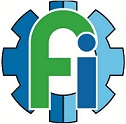Analisis Spektrum Akustik Tangis Bayi Penderita Penyakit Jantung Bawaan menggunakan Teknik Dynamic Time Warping
Abstract
Paper ini berfokus pada kajian perbandingan spektral tangis bayi penderita penyakit jantung bawaan (Congenital Heart Disease, CHD) dan tangis bayi normal menggunakan teknik Dynamic Time Warping (DTW).
Sebanyak sepuluh sampel tangis bayi penderita CHD dan bayi normal berusia kurang dari satu bulan direkam menggunakan Sony IC-Recorder tipe ICD-PX333. Data digital kemudian diproses menggunakan piranti lunak Speech Filing System (SFS) untuk mendapatkan f, formants, dan nilai Mel-Frequency Cepstral Coefficients (MFCC) sebagai penciri spektral yang kemudian divisualkan dengan DTW. Hasil kajian menunjukkan bahwa
ciri spektral tangis bayi penderita CHD mempunyai tingkat perbedaan signifikan terhadap tangis bayi normal. Di samping itu ditemukan anomali yang diduga berkait dengan irisan dalam bentang frekuensi ambang maupun formant tangis bayi normal dan penderita CHD.
Abstract
This paper emphasizes on acoustics spectral similarity analysis on of normal infant cry compared to infant spectrum with Congenital Heart Disease (CHD). Ten of the cries signals of infant with CHD and normal baby aged less than a month were recorded by using Sony IC-Recorder ICD-PX333. The Speech Filing System software utilized for estimating fundamental frequency, formants, and MFCCs were used as cry spectral characteristics to be visualized using Dynamic TimeWarping (DTW) technique. The result shows that both group partially has significant different characteristics since anomalies occurred which is considered due to the intersection on the values of fundamental frequency and formants of the both groups.
Keywords
Full Text:
PDFReferences
P.R. Daga, and M.A. Panditrao, International Journal of Computer Applications (0975-8887) on Electronics, Information and Communication Engineering (ICEICE), 3, 18-21. (2011).
B. Mijovic, et al., Schattauer, 49, 1-5 (2010).
R. Rani, et al., International Journal of Electrical and Electronics Engineering, 1(3), 32-37 (2012).
R. Rani, et al., Indian Journal of Computer Science and Engineering IJCSE, 3(4), 574-582 (2012).
A. Fort, and C. Marfendi, Medical Engineering an Physics, 20, 432-442 (1998).
J. Hirschberg, International Journal of Pediatric Otorhinolaryngology, 2, 287-300 (1980).
M.P. Robb, and A.T. Cacae, International Journal of Pediatric Otorhinolaryngology, 32, 57-67 (1994).
J. Lind, et al., Developmental Medicine and Child Neurology, 12, 478-486 (1970).
D. Bard, P. Runefors, and E. Arnbjornsson, Newborn pain cry analysis based on pitch frequency tracking, [www.acoustic08- paris.org.] (2008).
L. Lagasse, R. Neal, B.M. Lester, Mental Retardation and Development Disabilities Research reviews, 11(1), 83-93 (2005).
K. Michelsson, et al., Biology of the Neonate, 26, 353-358 (1975).
K. Michelsson, and P. Sirvio, Folia Phoniatrica, 26, 40-47 (1976).
Vikas, and R.K. Sharma, Scopus, 2, 753-759 (2015).
M. Subali, M. Andriansyah, C. Sinambela, Scopus, 365, 373-382 (2016).
E.A. Saputro, Jaringan syaraf tiruan kohonen untuk analisis klinik tangis bayi, Skripsi, Jurusan Fisika Fakultas Matematika dan Ilmu Pengetahuan Alam, Universitas Sebelas Maret, Surakarta, 2005.
M.Z.M. Ali, et al., Asphyxiated infant cry classificaton using Simulink model, Proceeding of the 8th International Colloquium on Signal Processing and its Applications, IEEE, 2012.
S. Gupta, et al., Signal & Image Processing: An International Journal (SIPIJ), 4(4), 101-108 (2013).
L. Tan, and M. Karnjanadecha, Modified Mel-Frequency Cepstrum Coefficient (ICEP, 2003).
P. Senin, Dynamic Time Warping Algorithm Review (CSDL Technical Report, 2008).
M. Muller, Information Retrival for Music and Motion (Springer, Berlin Heidelberg, 2007).
DOI: http://dx.doi.org/10.12962%2Fj24604682.v12i2.1333
Refbacks
- There are currently no refbacks.

This work is licensed under a Creative Commons Attribution-ShareAlike 4.0 International License.







